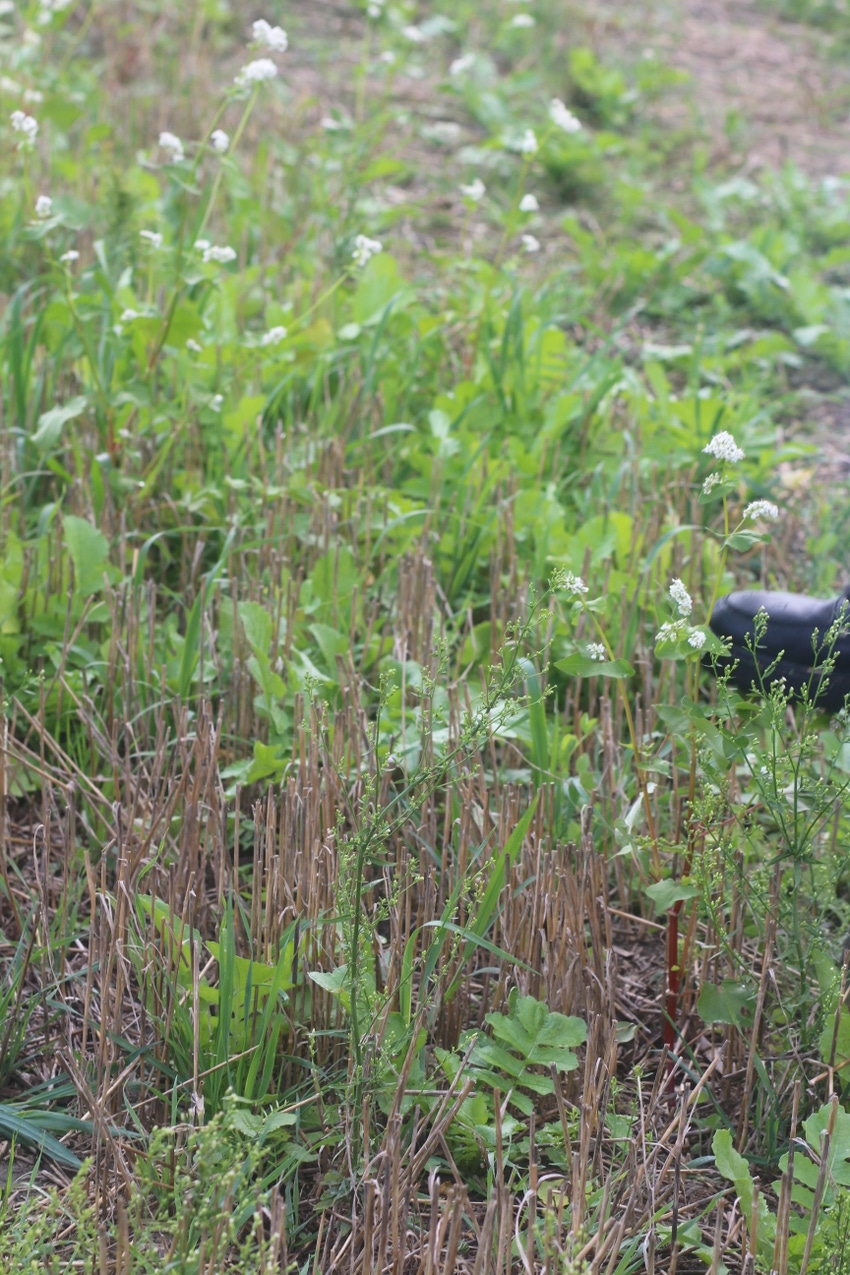October 25, 2017

A fairly common question this time of year – where I have planted cover crops, do I still need a fall herbicide treatment to help manage marestail? The underlying premise here is that where a cover crop develops enough biomass to adequately cover the ground by late fall, it can contribute substantial suppression/control of marestail. Grass covers seem to be most effective at suppressing marestail, as long as they are planted early enough in fall to develop this type of biomass. Grass covers can also be treated postemergence in the fall with several broadleaf herbicides, while this is not possible in covers that contain broadleaf crops – legumes, radish, etc. There are no hard and fast rules with regard to this situation but here are some things to think about:
- Herbicide options for cereal rye and wheat covers generally include all of the typical postemergence herbicides that are labeled for fall use in small grains – 2,4-D, dicamba, 2,4-D/dicamba premix, Huskie, etc. We do not recommend use of 2,4-D in fall on small grains grown for yield because of the potential for crop injury and yield loss. However, we have applied 2,4-D to cereal rye and ryegrass in our research, and either injury did not occur or was minor enough that we did not detect it. Yield is a not a factor for cover crops anyway. Late-planted rye and wheat, which would be less developed at the time of application, may be more sensitive to 2,4-D injury.
- Do not apply dicamba or 2,4-D around the time of planting due to risk of injury. Delay applications until cover has at least a few inches of growth. It is possible to make a preemergence application of glyphosate plus Sharpen, and Sharpen alone could work if marestail is the only weed of concern.
•Decisions about whether to treat a cover yet this fall should probably be based on several factors and how they affect cover crop development and marestail control: date of cover planting – earlier is better; seeding rate – higher is better; row spacing – narrower is better; ground cover – more is better (or less bare ground observed is better); overall cover biomass – more is better. Some of these factors are related of course. A higher seeding rate may net be needed to obtain adequate ground cover when planting early, but it could help in later planting. Even where the cover is optimized, fall application may be the safe strategy in fields with a history of dense marestail infestations that always seem to be a problem to control.

•Spring burndown management can also have a role in the fall herbicide decision. In our research in soybeans, maximum suppression of marestail often occurred when the cover crop kill in spring was delayed until close to planting, compared with early April, where we had substantial fall biomass. At one site however, the rye did not provide near as much suppression, and marestail control was maximized by applying in April, when marestail were smaller and more sensitive to 2,4-D. So it’s possible to compensate for the lack of a fall herbicide treatment by applying the burndown earlier, or by applying a more aggressive burndown treatment. For example, using dicamba in the soybean spring burndown/residual treatment will often result in more effective control compared with 2,4-D. Preemergence yuse of dicamba in Xtend soybeans also allows application of the burndown anytime before crop emergence if that’s the way a grower wants to manage the rye. Bottom line – relying on 2,4-D still in the spring burndown might sway the decision toward still treating in fall, while relying on dicamba could sway the decision the other way, all other factors being equal.
In summary, factors allowing for greatest possibility of skipping application of fall herbicides to the cover crop: 1) earliest possible cover planting and development of substantial fall growth that prevents bare ground; 2) use of more effective spring burndown herbicides; and 3) fields with low marestail populations.
About the Author(s)
You May Also Like




